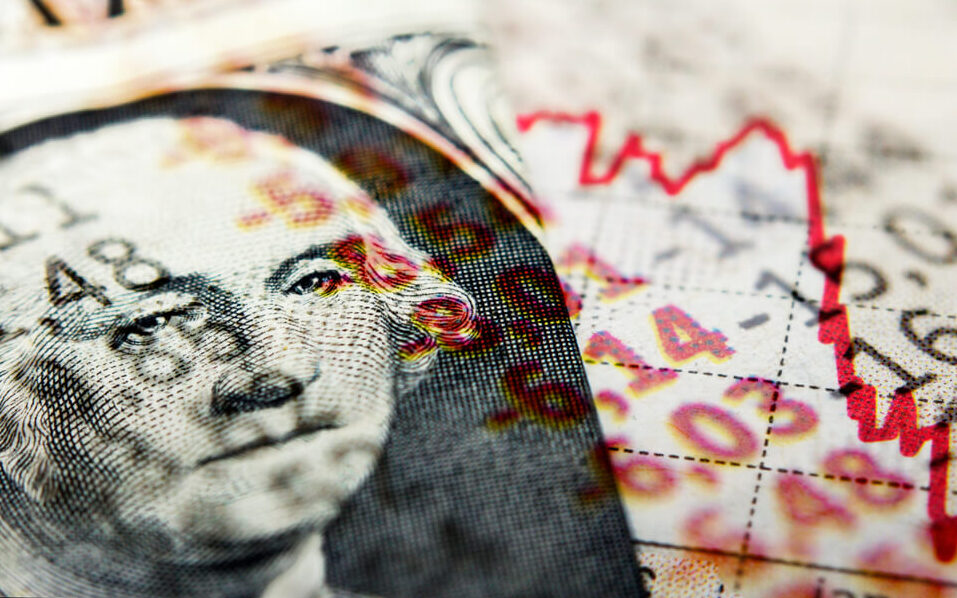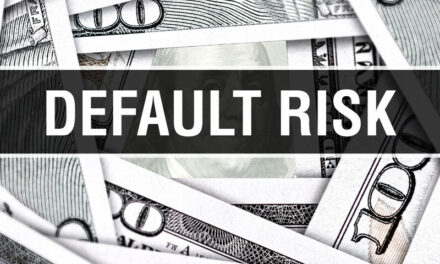It hasn’t happened since the 2008 global financial crisis but with the coronavirus wreaking havoc on economies around the world, it’s a good time to look at exactly what is a recession and how best to prepare for one.
In 2008, business orders declined, unemployment jumped, housing prices fell 10% and consumer purchases dropped off.
All of those signs pointed to the U.S. economy being in a recession.
It’s important to know just what a recession is, how it works and, more importantly, how you can prepare for one when it happens, particularly because it looks like a recession is now imminent in the U.S.
What Is a Recession?
An economic recession is normally tied to when the gross domestic product (GDP) growth rate is negative for two consecutive quarters or more.
However, the National Bureau of Economic Research looks at other factors to determine whether the U.S. economy is in an official recession. The NBER announces when recessions start and stop, and measure the stages of the business cycle.
The official definition of a recession by the NBER is: “A significant decline in activity spread across the economy, lasting more than a few months, visible in industrial production, employment, real income and wholesale retail trade.”
By including these other factors, the NBER can be more precise in its judgment of when a recession begins. It’s also not limited to just using GDP as the deciding factor.
The Bureau of Labor Statistics went a step further in 1974 to use more precise numbers to determine a recession:
- A decline in real GDP for two consecutive quarters.
- A 1.5% decline in real gross national product.
- A decline in manufacturing over a six-month period.
- A 1.5% decline in nonfarm payroll employment.
- A reduction in jobs in more than 75% of industries for six months or more.
- A 2-point rise in unemployment to a level of at least 6%.
Those would include using indicators like the ISM Purchasing Managers Index, the Conference Board Leading Economic Index and the OECD Composite Leading Indicator.
One thing to keep in mind is that the stock market is not an indicator of a recession. The main reason why is because investors tend to be either too optimistic or pessimistic, causing more volatility.
However, in a recession, indexes are likely enter a bear market — a decline of 20% from previous highs. A stock market crash can lead to a recession as investors lose confidence in the economy.
Now that we know what a recession is, let’s look at some previous examples from the past.
Examples of a Recession
There have been several instances where the U.S. economy has entered into a recession. Here are a few of the most recent:
- 2008 — This was the worst recession for the U.S. in 75 years. The subprime financial crisis coupled with an asset bubble and a bank run caused a snowball effect that saw unemployment jump from 4.5% to 10%. Tax cuts and increased government spending enacted in 2009 helped pull the economy out of the recession and level off unemployment.
- 2001 — From March 2001 to November 2001, dot-com companies saw their bubbles burst and manufacturing slashed by more than 1 million jobs as orders for products plummeted. Overall, nonfarm unemployment rose to 5.6% — 1.6 percentage points above the previous 30-year low of 4%. The recession followed the longest postwar expansion to date.
- 1990 — Following Iraq’s invasion of Kuwait, oil prices skyrocketed, leading to drops in manufacturing trade sales. A leveraged buyout of United Airlines Holdings Inc. (Nasdaq: UAL) led to a crash in the stock market. Unemployment reached 6.8% and the U.S. GDP dropped 1.5%. The recession lasted about eight months.
- 1981 — A change in leadership in Iran led to inconsistent oil production, pushing prices higher. Inflation jumped and the prime rate reached 21.5%. Unemployment was widespread — reaching 10.8% — while the GDP fell 3.6% during the 16 months of the recession. Before the recession of 2008, this was the worst economic fall since the Great Depression.
- 1973 — Unemployment went from 4.9% in the fourth quarter of 1973 to 3% in the fourth quarter of 1975. A big reason for that was oil prices jumping four-fold and the U.S. government still reeling from high spending due to the Vietnam War. This recession lasted nearly 16 months as the GDP fell 3.6% during that time.
There were several other recessions that followed the Korean War and World War II and, of course, the Great Depression of the 1930s where unemployment reached 19.1%.
Recession vs. Depression
While recessions are bad, depressions are worse.
The average recession lasts about 11 months, according to the International Monetary Fund, but a depression can last several years.
There’s no clear, formal definition of a depression, but economists measure it when GDP declines by 10% or more.
The last depression in the U.S. was in the 1930s following the stock market crash in 1929. The most recent depression globally was in the 1990s in Finland when that country’s GDP fell by nearly 14%.
One of the biggest reasons for that depression was the breakup of the former Soviet Union, which was a significant trading partner of Finland.
During the Great Depression in the U.S., GDP dropped about 30% over a four-year period.
How to Prepare
It is extremely hard for an economy to avoid a recession.
When the economy is in a state of recession, it impacts nearly everyone. Job losses are rampant and the cost of basic household items tends to go up.
But there are some things you can do to help ease the hit you will take when a recession does come. Here are some of those things:
- Get rid of unnecessary expenses — You are going to want to really tighten your belt in terms of the money you spend. Look over your expenses and determine what you can cut out or cut back on. It will be hard to make those choices, but it will help in the long run.
- Boost your savings — Putting money back is key here. If you are unfortunately laid off or have a big medical expense, you want to make sure you can pay for it. It’s best to have three to six months of savings built up.
- Find something on the side — While the worst-case scenario is that your company has to lay you off, you can start reducing the impact of that now by finding a new income stream. This can be done by finding some kind of part-time job. Of course, if you are lucky and aren’t laid off, the side hustle can help boost those savings we talked about.
- Pay down debt — Money is likely to be tight during a recession. If you have any high-interest debt — like credit cards or car loans — it’s best to pay them down as much as possible. Of course, if you can pay them off, that’s even better.
- Get your supplies — As stated above, the cost of basic household items tends to go up during a recession. Stock up on nonperishable items while those prices are still low and it will reduce the amount you have to buy later.
So, now you know what is a recession and how you can prepare.
Make sure to keep an eye out for the key indicators and try to get ahead of the game so you aren’t stuck behind the 8-ball when the next recession hits.




